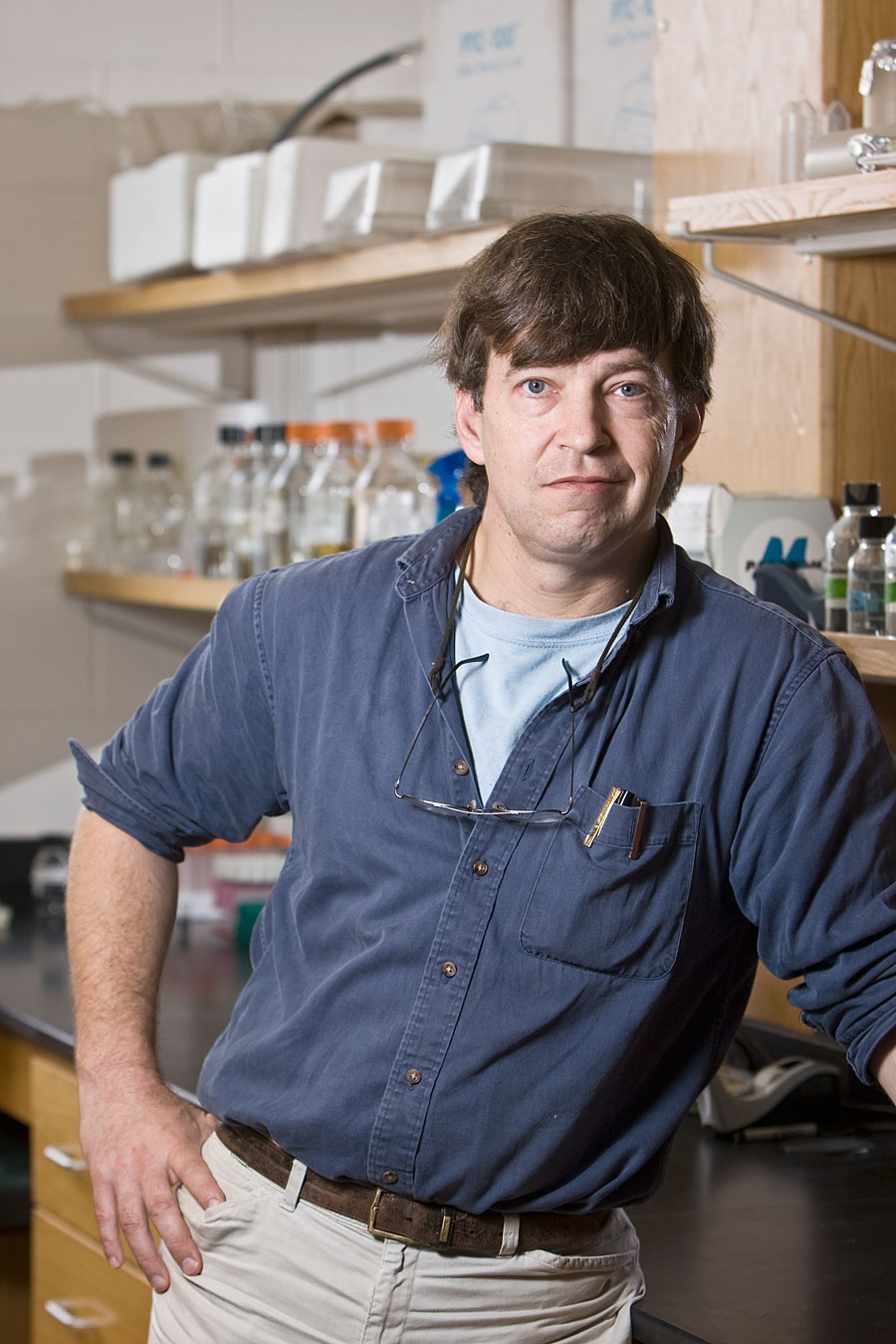Athens, Ga. – University of Georgia researchers, working with representatives from most of the world’s major cotton-producing countries, have led the description of the first “gold-standard” genome sequence for cotton.
In the Dec. 20 edition of the journal Nature, an international consortium of researchers from 31 institutions presents a high-quality draft assembly of the simplest cotton genome—known scientifically as Gossypium raimondii.
Additionally, the team compared the genome from this ancestral species indigenous to the Americas to several other sets of cotton data contributed by the U.S. Department of Agriculture. The results have allowed the researchers to trace the evolution of cotton over millions of years from wild varieties to the domesticated species now associated with textile production.
The effort to develop a gold-standard sequence of the cotton genome was jump-started in 2007 when the U. S. Department of Energy Joint Genome Institute Community Sequencing Program approved a proposal from UGA Regents Professor Andrew Paterson.
Among the 74 authors of the paper, 18 were from UGA, the largest among the 31 institutions involved.
“My group set out toward this goal in 1991, and this achievement is not an ending but a beginning,” Paterson said. “We are enthusiastically pursuing next steps using the genome sequence to better understand cotton biology and identify important genes that will improve sustainability of cotton production and increase its role in the more bio-based economy of the future.”
The DOE hopes to maximize cotton’s potential as a biofuel stock while developing more efficient and sustainable crop varieties for the fiber’s traditional uses.
This new “cotton data will help accelerate the study of gene function, particularly cellulose biosynthesis, the understanding of which is fundamental to improved biofuels production,” said Jeremy Schmutz, head of the DOE Joint Genome Institute Plant Program and a faculty investigator at the HudsonAlpha Institute for Biotechnology, who led the effort to sequence and assemble the genome for the Joint Genome Institute.
“In addition, the unique structure of the cotton fiber makes it useful in bioremediation, and accelerated cotton crop improvement also promises to improve water efficiency and reduce pesticide use.”
The worldwide cotton community chose G. raimondii to be the first of 50 cotton species sequenced as the best model for the New World progenitor of commercially important upland and pima cottons.
In collaboration with Mississippi State University and the USDA’s Agricultural Research Service, Paterson and others selected several additional genomes for sequencing, which enabled the team to trace cotton’s evolution and the gene duplications that accelerated fiber development.
The cotton genome sequence will be invaluable both on the farm and in the biotechnology laboratory, Paterson said.
On the farm, the identification of key cotton genes and their importance will provide data crucial to increasing cotton production, quality and sustainability.
In the lab, the comparison of an elite cotton cultivar to its wild ancestors provides new insights into how a polyploid—a hybrid of more than one type of cotton—becomes more than the sum of its ancestors. All flowering plants have experienced polyploidy, a process by which the entire hereditary blueprint of an organism is doubled.
“This study represents the first time that a polyploid plant was compared to its progenitors over the entire genome,” Paterson said. “This study reveals evolutionary processes salient to all plants and provides a strategy to better understand the genome of many other crops, such as canola, wheat and peanut.”
This cotton sequence is among the highest-quality flowering plant sequences yet produced. And it revealed G. raimondii to be among the most complex of flowering plant genomes, experiencing at least a 30-fold multiplication of its genetic complement since its origin from an ancestral flowering plant.
Paterson’s colleagues built their understanding of this complexity based on information accumulated over more than 20 years of research funded by the NSF, the USDA, Cotton Inc., the Consortium for Plant Biotechnology Research, Bayer Crop Science and other public and private agencies.
Cotton production contributes heavily to many economies. The value of cotton fiber grown in the U.S. is typically about $6 billion per year. Cottonseed oil and meal byproducts add nearly $1 billion more value. More than 430,000 domestic jobs are related to cotton production and processing, with a combined influence of about $120 billion on the annual U.S. gross domestic product and an estimated annual $500 billion worldwide.
Don Jones, director of Agricultural Research responsible for biotechnology research at Cotton Incorporated, said this G. raimondii gold-standard sequence will be the foundation for further sequencing of commercially important upland cotton know as G. hirsutum.
“This sequencing effort demonstrates that wise investment of grower-supplied Cotton Inc. funding produces cutting-edge research, which benefits the greater cotton community,” Jones said. “This sequence is a cornerstone that will help advance our knowledge so we more thoroughly understand the biology that leads to enhanced yield, improved fiber quality and better stress tolerance—all improvements that will benefit growers in the not-too-distant future.”
Among the collaborators on the genome project were the DOE Joint Genome Institute, USDA, Cotton Inc., Iowa State University, Mississippi State University, the Consortium for Plant Biotechnology Research and the National Science Foundation.
The journal article is available at http://www.nature.com/nature/journal/v492/n7429/full/nature11798.html.


